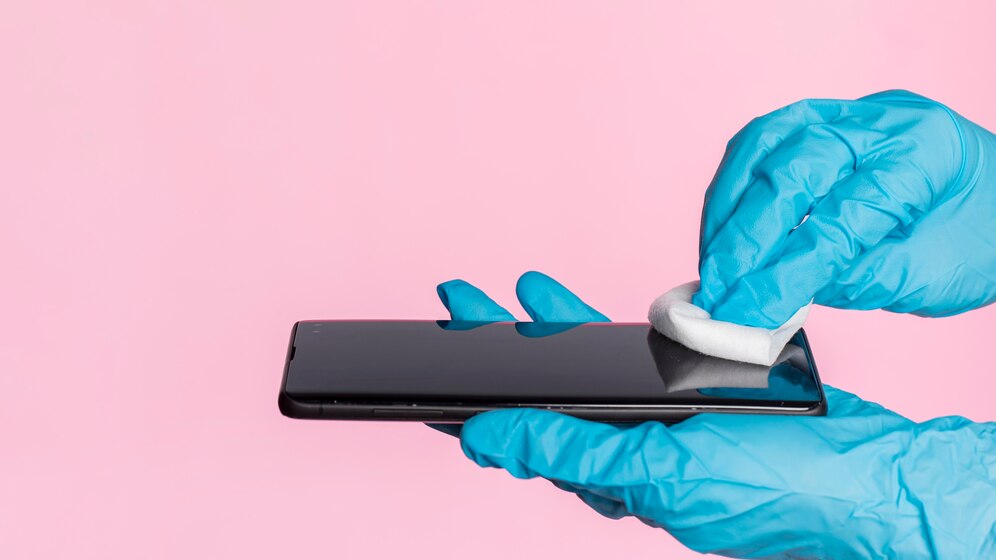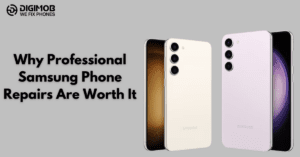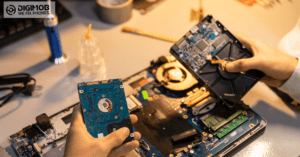In today’s ever-evolving smartphone landscape, protecting our treasured devices from everyday wear and tear is of utmost importance. One crucial aspect of safeguarding your mobile phone is choosing the right screen protector—a task that can feel overwhelming due to countless options and varying degrees of quality. However, selecting the perfect screen protector doesn’t have to be an arduous process.
In this definitive guide, we will explore the essential factors to consider when choosing a screen protector for your smartphone. From understanding different types, materials, and features to considering compatibility with your device, we’ll walk you through the necessary steps to making an informed decision. With the help of Digimob Phone Repairs’s expertise and tailored advice, you can select the perfect screen protector for your mobile phone and ensure optimal protection for the device you rely on every day. Let’s dive in!
Understanding Different Types of Screen Protectors
As you navigate the world of screen protectors, you’re likely to encounter a few distinct types: tempered glass, PET (polyethylene terephthalate) plastic, and TPU (thermoplastic polyurethane) protectors. All offer varying degrees of protection, and your choice will ultimately depend on your preference and specific requirements.
1. Tempered Glass Screen Protectors:
Tempered glass protectors are typically the most durable and offer the highest level of scratch and impact resistance. They resemble your smartphone’s original screen, ensuring optimum touch sensitivity and minimal distortion. However, they can be more prone to shattering upon forceful impact.
2. PET Plastic Screen Protectors:
These protectors are ultra-thin and lightweight, allowing for relatively high touch sensitivity and near-invisible screen coverage. While they can prevent minor scratches, PET protectors may not effectively withstand significant drops or impacts.
3. TPU Plastic Screen Protectors:
TPU protectors reside between PET and tempered glass in terms of protection, offering flexible coverage and self-healing capabilities. Despite being slightly more challenging to apply, TPU screen protectors can absorb shock well, making them a reliable choice.
Considerations When Choosing a Screen Protector
Apart from understanding the different types of screen protectors, other factors, such as compatibility, installation difficulty, and specific features, play essential roles in your decision-making process.
1. Compatibility with Your Device:
Before purchasing a screen protector, ensure it’s compatible with your smartphone model. A compatible screen protector will have precise cutouts to accommodate features such as speakers, cameras, and buttons, providing a seamless fit.
2. Installation Difficulty:
Some screen protectors can be challenging to install, leading to misalignment, air bubbles, or dust trapped beneath the protector. Opt for a protector that includes installation tools like lint-free cloths, smoothing cards, or even alignment frames to guarantee a hassle-free, flawless installation.
3. Smartphone Case Compatibility:
Ensure your screen protector is compatible with your smartphone case, especially if it features raised edges or specific designs. A case-friendly screen protector should not extend to the device’s curved edges, allowing for adequate space and seamless integration with your existing case.
4. Specific Features:
Some screen protectors offer additional features like anti-glare coatings, blue light filtering, or privacy layers. As personal preferences vary, you may consider these features when deciding which protector best suits your needs.
Evaluating the Quality and Brand Reputation
As with any purchase, a screen protector’s quality and brand reputation play vital roles in the satisfaction you’ll receive from your investment.
1. Thickness and Hardness Ratings:
A higher hardness rating (measured on the Mohs scale) translates to increased resistance against scratches and impacts for tempered glass protectors. A hardness rating of 9H is considered the industry standard for quality protectors. The thickness of a screen protector can also impact its performance; thicker protectors generally offer greater protection but may compromise touch sensitivity.
2. Brand Reputation:
Researching and choosing a reliable brand significantly increases the likelihood of a satisfactory user experience. Check online reviews and ratings, consult friends or family, and seek expert advice to determine which companies consistently produce high-quality screen protectors.
Proper Application and Maintenance
To ensure lasting protection, applying your screen protector correctly and maintaining its cleanliness are crucial. Here are a few tips to guide you through the process:
1. Preparing Your Workspace:
Choose a clean, well-lit workspace to eliminate dust interference during installation. Before beginning, gather all necessary tools, such as lint-free cloths, smoothing cards, and the provided installation instructions.
2. Cleaning Your Smartphone Screen:
Clean your smartphone’s screen thoroughly using the recommended cleaning solution or lint-free cloth provided. Before applying the screen protector, ensure no dust, lint, or fingerprints remain on the surface.
3. Peeling and Aligning:
Carefully peel off the protective layer from the screen protector and align it with your device’s screen, guided by the speaker, camera, and button cutouts. Ensure the screen protector is appropriately aligned and centred before pressing it onto the device’s screen.
4. Smooth Out Bubbles and Adhere:
Using a smoothing card, gently push any remaining air bubbles towards the screen protector’s edges. Apply adequate pressure to the protector to ensure it adheres well to your smartphone.
5. Cleaning and Maintenance:
Regularly clean your smartphone and screen protector using lint-free cloths or appropriate cleaning solutions to ensure optimal clarity and touch sensitivity. Regular cleaning also helps to identify potential scratches or cracks in the protector, enabling timely replacement if necessary.
Secure Your Smartphone’s Screen with Digimob Phone Repairs
Choosing the right screen protector for your smartphone is essential for preserving your device’s screen and ensuring lasting protection from daily mishaps. By understanding the types of screen protectors available, considering factors like compatibility, installation, and specific features, and following proper application and maintenance guidelines, you’ll set yourself up for an optimal mobile experience.
For expert advice on selecting and caring for your screen protector, look no further than Digimob Phone Repairs. Our experienced team is committed to guiding you through the process and helping you make the best choice for your smartphone. Contact us or visit our website for more information about our mobile phone repair services, and let us assist you in safeguarding your mobile device with the perfect screen protector.



